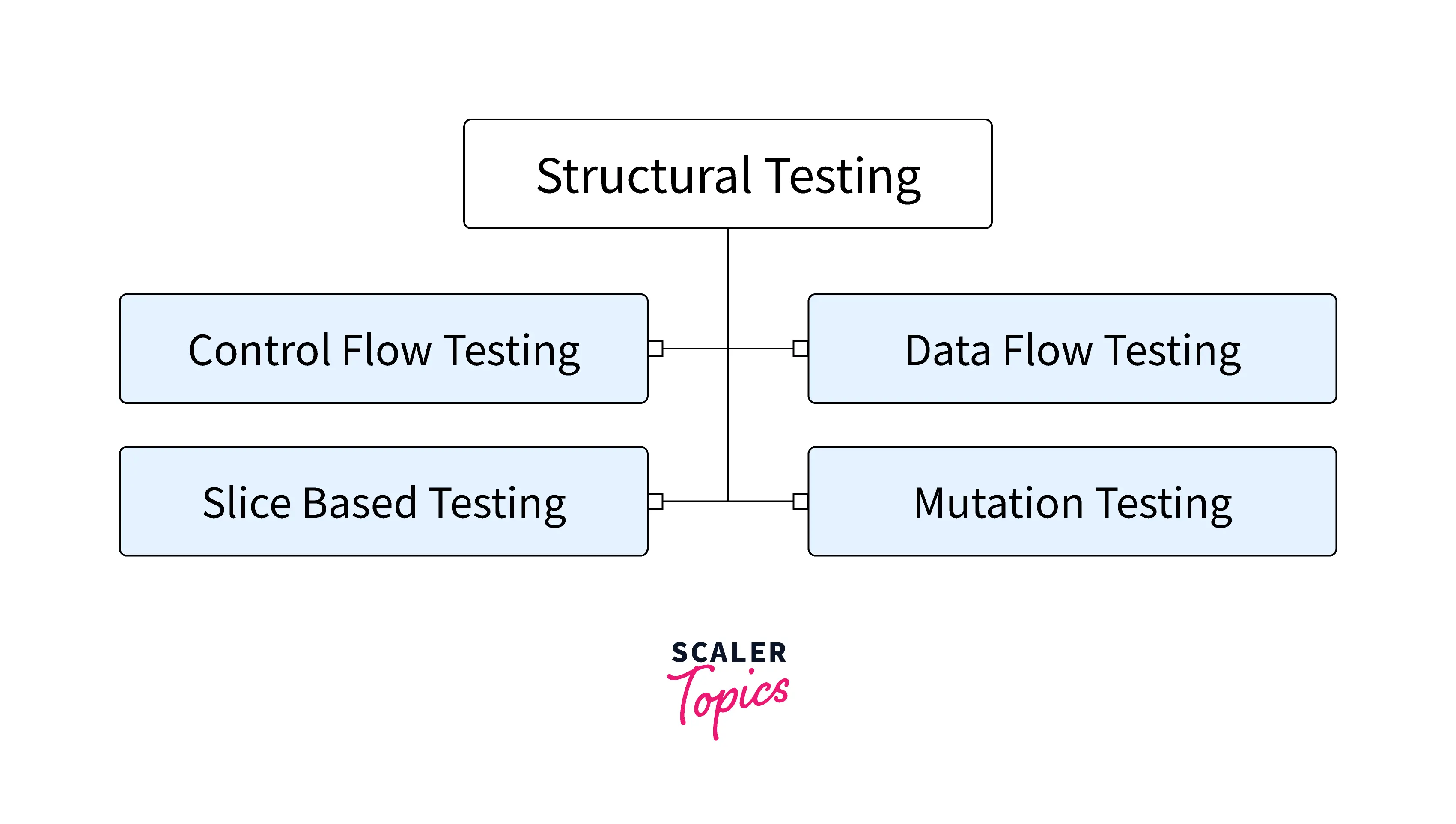Structural Testing
Overview
Structural testing is a white box testing type where the test cases are written based on how components are built and designed. The code architecture is the key here. A tester must know how the development works and should have an idea about the code here.
What is Structural Testing?
Structural testing is a type of software testing where test cases are written after understanding the internal design and architecture of the code.
It tests if the code is defect-free by considering the flow of the code, modules integration, and transfer of data variables from one module to the other.
Structural testing tests the application in depth and also tells the cause of why test cases are getting failed. Programming knowledge is required here. Structural testing improves the code solution to find the code which is not required and highlights the reusable components.
Types of Structural Testing

Below, We are going to categorize structural testing based on the approach used.
Mutation testing
In Mutation testing, a source code is changed to test if the test cases can identify and fail the change.
Mutation testing aims at improving the quality of testing and finding new scenarios of test cases to have a higher quality product. If the same test case scenarios were used in every product, the quality of the code would never get better.
Data flow testing
Control flow graphs and associations are used for data flow testing where the changes in the value of a variable are noted and based on which test cases are passed and failed.
Data flow testing is also a white box testing where a control flow graph is created. Then variables are initialized, and wherever directly or indirectly, the variable being used is noted.
Control flow testing
Control flow testing uses control flow graphs to test the software functionality. The test cases are written in test case scenarios of the code flow. This methodology is used to test the flow of the code. Hence the knowledge of the code's structure is very important here.
Slice-based testing
Slice-based testing breaks down the entire system into different modules called slices. Now, the most used slices are tested for accuracy. The common concept in testing is that 90% of the bugs are due to 10% of modules. So, ensuring 10% of modules are defect-free makes the product higher in quality.
Structural Testing Tools
1. Cucumber:
Cucumber is a tool that supports a behaviour-driven testing approach in software testing. It makes use of a semi-technical language called gherkin.
2. Behave:
Behave is also a BDD tool but for python language. A file is maintained in the gherkin language, mapped with pytest test cases. Behave is based on agile methodology, where the entire agile team could participate.
3. Junit:
JUnit is a unit testing framework. It allows developers to pass their code through test cases so that once the test cases are passed, they can be merged directly into the source code via the pipeline.
4. Cfix:
cfix tool is an xUnit testing tool for C/C++, specializing for Windows platform (32/64 bit).
Advantages of Structural Testing
- It is used to test the internal design of the code.
- It helps to remove excess code that exists.
- It helps to identify the most important components in the code flow.
- It helps to find the defect early.
Disadvantages of Structural Testing
- Good coding knowledge is mandatory in structural testing.
- Code design and flow must be known to the tester.
- It requires both manual and automation experience in testing.
- It requires skilled testers as having good knowledge of the code is mandatory.
Conclusion
- Structural testing is a white box testing technique where code design is tested. Structural testing techniques may help us to identify the otherwise overlooked flaws in the code structure.
- Structural testing types include data flow testing, mutation testing, slice-based testing, and control flow testing.
- Cucumber, behave, cfix, and JUnit are commonly used tools.
- Structural testing requires good coding knowledge.
